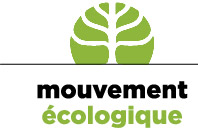
Replay and report on the conference: Biodiversity and the declline in insects: Why protecting the very small should be one of our biggest priorities!
… was the title of the conference with Dr Axel Hochkirch, an internationally renowned insect researcher and curator of the ecological department of the local natur musée. The focus was on a recent study that made international headlines in winter. With their results, the researchers led by Hochkirch sadly trumped the already alarming findings of the World Biodiversity Council (IPBES) from 2019 (‘One million species threatened with extinction worldwide!’): In contrast, two million species are endangered!
One million or two million species endangered?
The situation for living creatures has not worsened in the last five years to such an extent that twice as many species are now at risk globally. Axel Hochkirch explained that, above all, the data basis for calculating the endangerment figures is now more complete than was the case in the 2019 IPBES report. At that time, no Red List data was available for many groups of invertebrates (e.g. insects, snails), even though they make up a large proportion of the world’s living creatures.
Thanks to increased research and the inclusion of these species groups, a more realistic picture of the threat could now be drawn. In his presentation, Hochkirch repeatedly emphasised the importance of research and the creation of Red Lists. They form the basis for subsequent planning, action and conservation measures (‘study-assess-plan-act-cycle’). Because ‘species often die out due to ignorance!’
Which animals should be protected?
Using a ‘gradient of appreciation’, Axel Hochkirch impressively demonstrated why some species groups are better protected and researched than others. Humans orientate themselves on ‘simple’ categories: Preference is given to protecting ‘species similar to humans’ (apes), followed by the ‘cute’, ‘charismatic’ species’. At the bottom of the list are ‘pests’ and ‘disease vectors’ – mostly insects – although these are also important in the network of biodiversity.
He also addressed the intrinsic value of biodiversity and the numerous ecosystem services that insects provide to us humans. He emphasised several times that humans must of course protect biodiversity, as we need it as a basis for life. However, it would be a mistake to see nature only ‘in the service’ of humans. It should be protected for its own sake.
What are the reasons for the extinction of numerous species?
The high level of biodiversity in our latitudes has developed over the centuries as humans have utilised the land for forestry and agriculture. The most endangered species in our country are those of open land, i.e. areas used for agriculture. It has been proven that species here are dying out primarily due to ‘land-use change’. On the one hand, because many agricultural areas are being used more and more intensively and the ‘uniformised’ and cleared (i.e. no longer diverse) landscape is a problem. On the other hand, the exact opposite is also true: where land is no longer cultivated, e.g. because the yield is too low, overgrown meadows and pastures can be found, which are just as problematic for numerous open land species.
Species extinction and farm extinction go hand in hand
It is interesting to note that the number of farms has also decreased in line with the decline in biodiversity in our landscape. Farmer and species extinction thus go hand in hand, both caused by the EU’s misguided agricultural subsidisation policy. An insect-friendly landscape looks like this: a mosaic of diverse plots of land, with hedges and trees in between, fallow land, little fertiliser and no pesticides at all, ideally managed by many small farms.
The suggestions of the Mouvement Ecologique
Following this very instructive presentation, Claire Wolff from the Mouvement Ecologique briefly presented the Meco’s suggestions to the new government, which was part of the evening’s theme: ‘The biodiversity crisis is worsening: ministries for biodiversity and agriculture must assume their responsibilities immediately!’ In this paper, the Mouvement Ecologique sets out how dramatic the biodiversity crisis is, what instruments are available in this country to tackle it and specifies concrete measures to eliminate the known problems and hurdles in the slow implementation. Above all, agricultural policy must be fundamentally reorganised in order to promote biodiversity-friendly farming. Furthermore, the institutions involved in nature conservation must be better equipped in terms of personnel and funding in order to restore the habitats that have been destroyed.
Of the almost 100 participants, many experts from nature conservation and environmental protection were present and there was a lively discussion about the necessary measures at the ‘Patt’.
24.04.2024



















